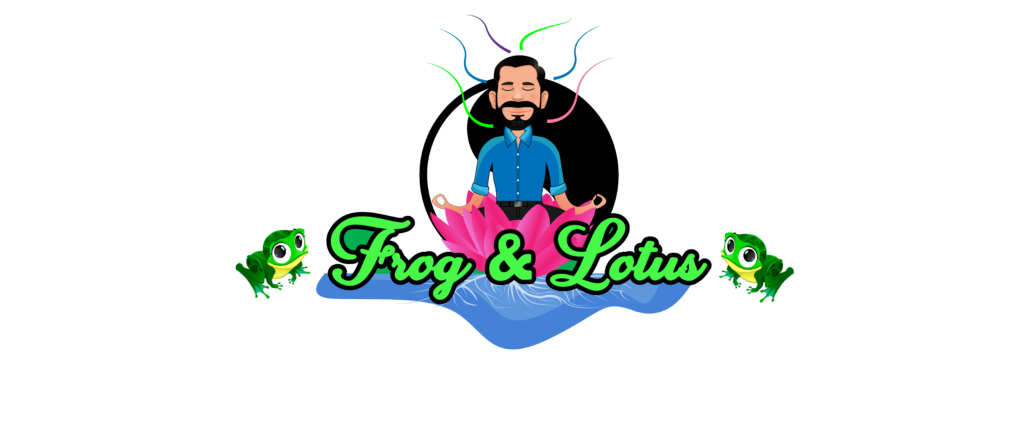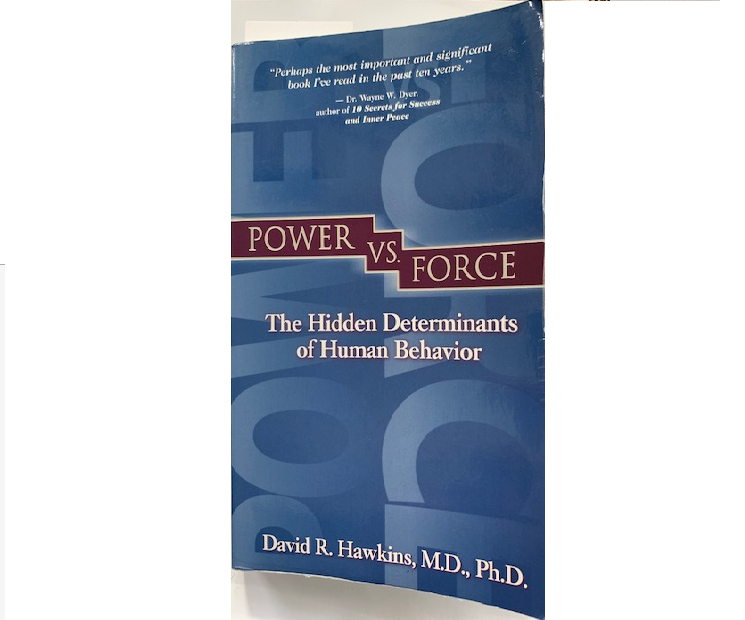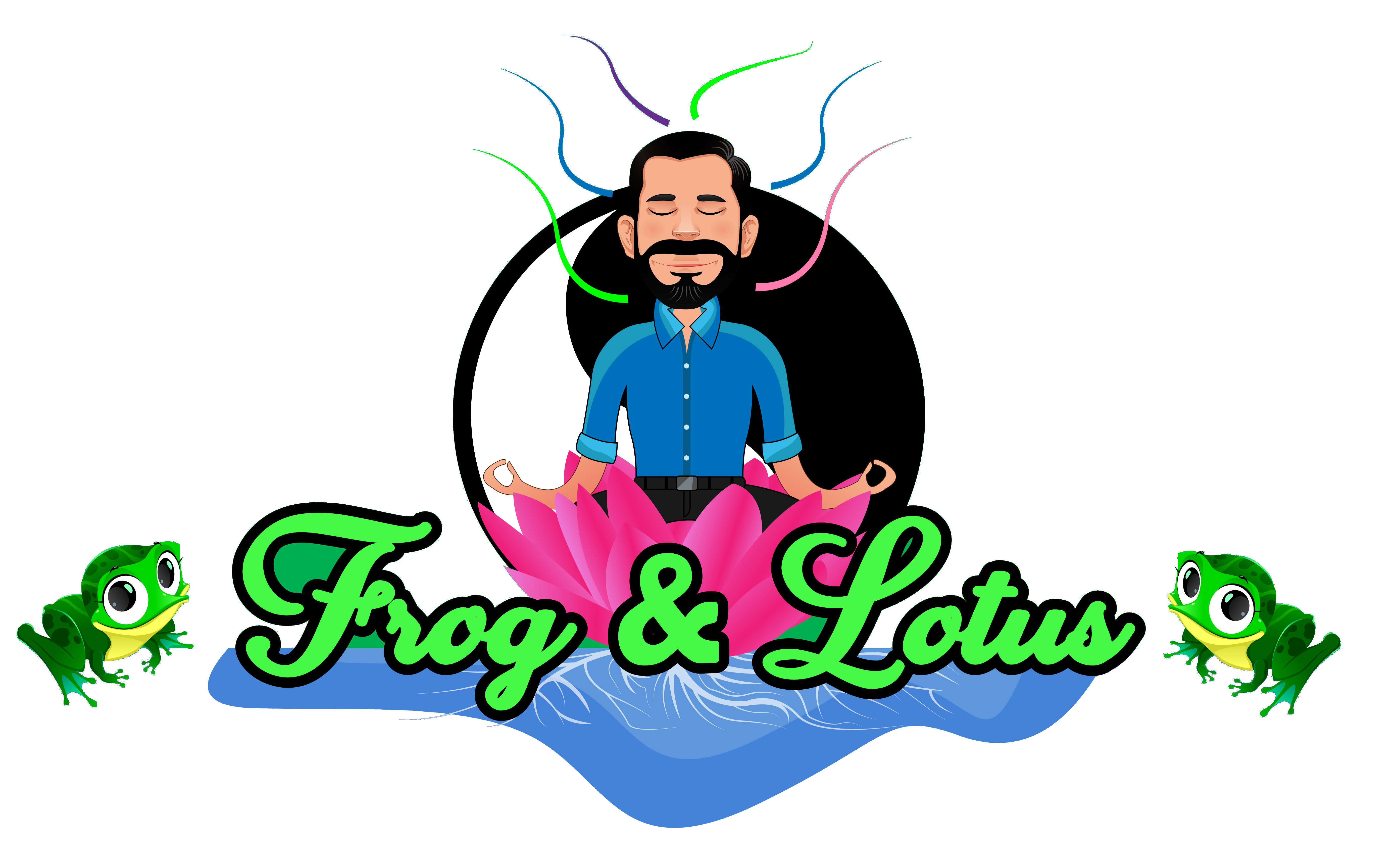Power vs. Force by David Hawkins, currently the most influential book I’ve read in 2020, was first recommended to me by a real estate trainer, Zan Monroe, when I first got into that business. I was energized by his enthusiasm and being eager to learn I read the book. This was probably around 2003/2004. I don’t recall being overly moved by the book back then. What I remembered about the book was the author’s description of kinesiology and the test he described for evaluating the truth of basically anything. The test takes advantage of the human body’s musculature and its natural response to positive and negative stimulus. This physical response is said to reveal truthfulness.
It is a simple test. The subject stands with an arm extended horizontally. A second person puts two fingers on the subject’s wrist and applies pressure while the subject resists the pressure to keep his or her arm horizontal. A statement is then made to the subject. If the statement is true, Hawkins says that the subject’s arm will “go strong” which means it will resist the pressure applied by the tester. If the statement is false, the subject’s arm is said to “go weak” which means the muscles of the arm will give in to the pressure of the tester.
This method, the books describes, is said to have been used with thousands of people and always yields consistent results. It is also said to be valid for testing the truth in anything, including a statement, an object, or even a person’s consciousness. For example, the author shares that when artificial sweeteners are brought into the presence of a subject being tested, the arm will “go weak” suggesting that the body is telling us to avoid such substances. The point of kinesiology is to help us see that the body “knows” truth.
This was a very interesting concept to me when I first read the book. While I don’t completely remember my response to the rest of the book, I’m guessing that the rest of it was over my head. If I had another person here with me, I’d have them test that question with me to see if I “go strong” or “go weak”. Nonetheless, I checked that book off, as one that I had read, and I put it on my shelf.
Seventeen years later, I was reminded of this book by a friend, Dr. Mardoche Sidor, who I consider to be a mentor and fellow journeyman along my spiritual path. He mentioned to me during one of our discussions that Power vs. Force was one of his very favorite books. In the spirit of connection and not remembering much about it, I decided to re-read it. (By the way, this is very rare for me. There are so many great books I have not yet read and I don’t often make the time to go back and re-read something I’ve already read. Something told me this book was different.)
I’m so glad I did. It almost hurts me to say that this book has jumped to my number one book of 2020. It hurts because my previous number one was The Seat of the Soul by Gary Zukav and that was so profound that I feel guilty moving it to my number two, especially considering I’ve already read Power vs. Force once before.
My second reading of Power vs. Force reminds me that understanding is contextual. We read and interpret books based on our own level of understanding of the world at that moment. I did not have the right context the first time. While reading it the second time, the kinesiology testing almost felt like a side note to me. This time the book was all about levels of consciousness. It turns out that the author used the kinesiology testing to determine levels of human consciousness. He used his results to create an exponential scale from 0 to 1000. He quantifies the lowest levels of consciousness, which include guilt and shame, at values of 20 and 30 respectively. The highest levels of the scale range from 700-1000 and are reserved for the enlightened consciousness. For a complete look at the scale, a quick google search on the Power vs Force Map of Consciousness will reveal the full map and plenty of commentary.
Hawkins’ levels of consciousness (both individual and collective) can be determined using the kinesiology testing method described above. This means that certain levels will make a subject “go weak” and some will cause that subject to “go strong.” The levels on the map that cause a weak response include Shame, Guilt, Apathy, Grief, Fear, Desire, Anger, and Pride in that order from lowest to highest. The levels yielding strong response include Neutrality, Willingness, Acceptance, Reason, Love, Joy, Peace, and Enlightenment again from low to high.
[I’d like to pause here for a moment in case you, the reader, are feeling skeptical about the kinesiology testing procedure and the levels of consciousness discussed above. If you are skeptical, do a quick experiment with me now. Out loud, say the words representing the negative levels of consciousness one at a time: Shame, Guilt, Apathy, Grief, Fear, Desire, Anger, and Pride. Take note how these words make you feel. Now do the same for the higher levels of consciousness: Neutrality, Willingness, Acceptance, Reason, Love, Joy, Peace and Enlightenment. How do these words make you feel? Your body does know the truth!]
On and individual level, our human consciousness is not something that is static on the Hawkins’ map. Our levels of consciousness can vary from moment to moment. I can feel fear one moment and acceptance another. It is the average of our levels of consciousness over time that determines our overall individual levels. Hawkins says that for most people, their average level of consciousness does not vary much more than around five points over the course of a lifetime. Yet while individual consciousness may only increase minimally from person to person, over time our collective consciousness has evolved and advanced greatly. Each of us, through small deposits of individual consciousness, contributes to the collective that is our universe.
The level of consciousness where a subject’s response is neither weak nor strong is identified as Courage. This was enlightening to me. Courage, or “being brave” as I have tried to teach my kids, is when you feel fear, but you do something anyway. This makes so much sense. You feel fear in the lower (negative) levels of consciousness, but you step across the threshold into positive consciousness, despite that fear. And what we discover in the process is that the lower levels of consciousness are dependent on ego, or more specifically the separation between our egoic self and our True Self. I may have lost you. Let me explain.
In studying the map of consciousness, you can see that each level below courage (those that cause a subject to “go weak”) requires ego, a separate identification with the self. For example, anger requires and “I” who is angry and a separate someone or something that “I” is angry with; “I am angry with you.” Pride requires an “I” that sees itself as better than others; “Hey, look at me.” At the lower levels of guilt or shame, we feel bad about “ourselves”; “I” did something wrong or “I” am not good enough.
However, on the strong side of the map, the levels of consciousness are experienced when the ego is relinquished, and we acknowledge that we are all part of a whole. Acceptance requires forgiveness which is a letting go of ego. Love for oneself and for others requires a letting go of ego (otherwise, its just pride). And at the highest levels, Peace, Joy, and Enlightenment exist only when we let go of our ego and surrender to what is.
Courage is the beautiful line between the egoic self and the oneness of all things. It takes courage to step across the threshold. It takes courage to surrender the ego and step into willingness, acceptance and reason. It takes courage to let go of guilt, shame and anger and step across to love, joy and peace. It is courageous to surrender and to trust in God, the universe, the Tao, the Force (for my Star Wars friends) to take care of things. While the statistics say that the average individual does not increase their level of consciousness significantly over the course of a lifetime, it seems to me that the goal of personal mastery is to give the attempt our best effort. And now it is clear that all it takes is courage to go from guilt and shame to love, peace and joy.


